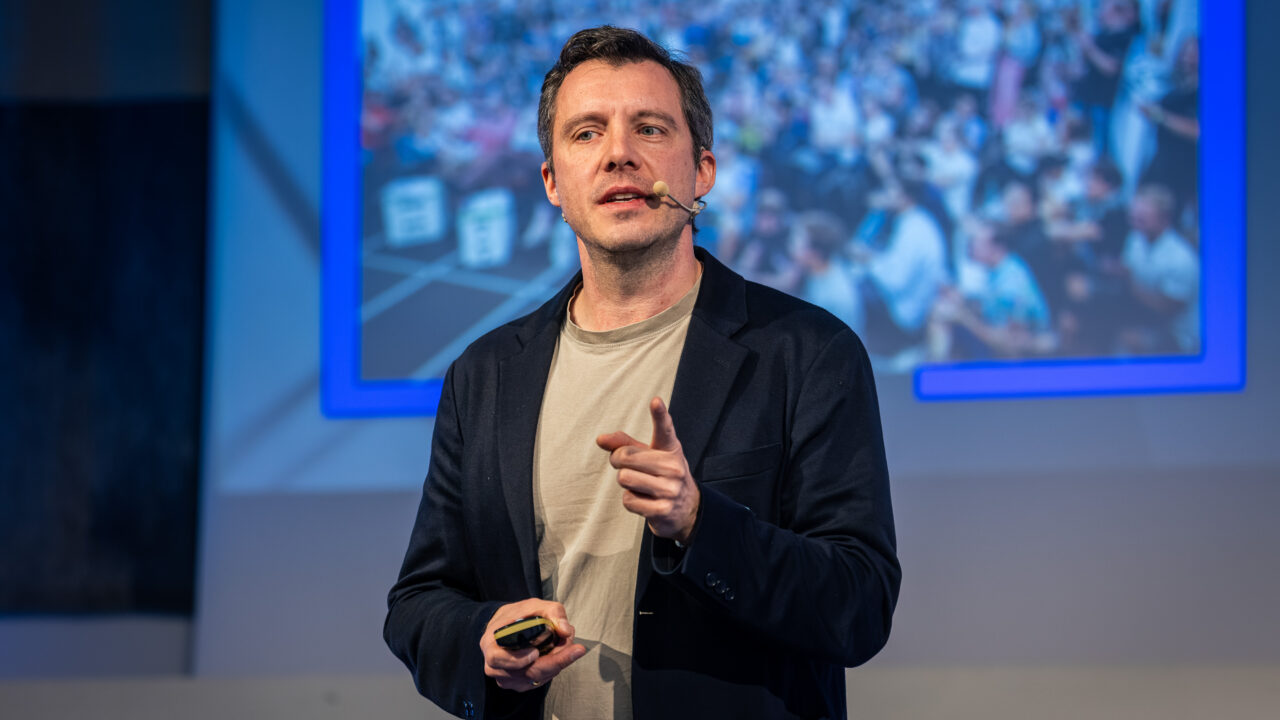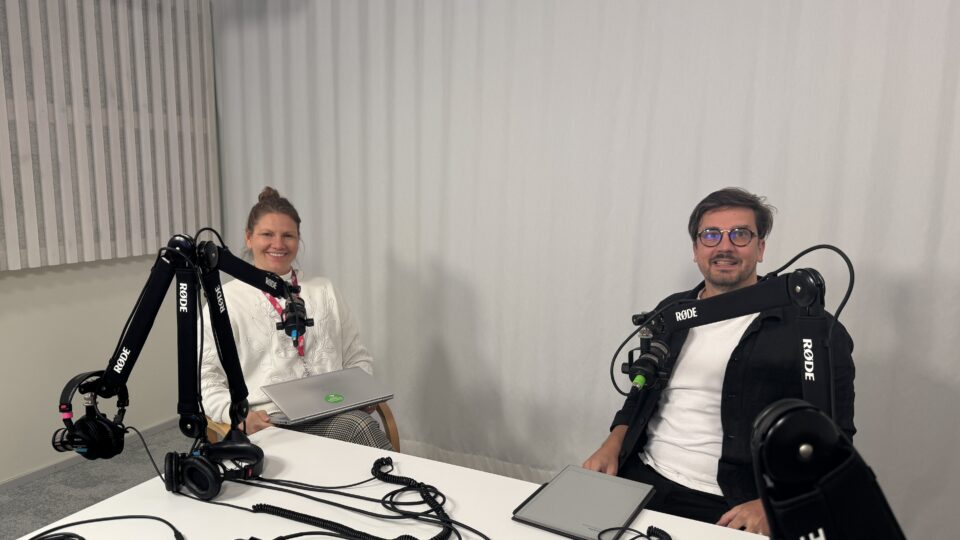Stefan Drüssler is one of Europe’s most influential innovation leaders. He heads UnternehmerTUM, the Center for Innovation and Business Creation at the Technical University of Munich – the largest start-up and innovation hub in Europe. With more than 500 people working there, the centre helps bring scientific ideas from the lab to the market.
“Don’t try to turn engineers into entrepreneurs – just help them fulfill their dreams,” said Drüssler, stressing that entrepreneurship should not be a forced or secondary goal, but rather a natural part of the creative process. According to him, engineers are driven by the desire to build, improve, and create something meaningful. They don’t go to university to study business models but to build, experiment, and solve technical problems. What’s important is to support them in bringing their ideas to life and show them how it can be done. That’s when an entrepreneurial mindset begins to emerge.
He cited the example of space start-up Isar Aerospace, which grew out of exactly this kind of hands-on approach. “These young people weren’t thinking about how to write a business plan – they wanted to build rockets. Our role was simply to support that journey,” Drüssler recalled. Today, Isar Aerospace collaborates with the European Space Agency and is considered one of Europe’s deep tech success stories.
“Don’t try to turn engineers into entrepreneurs – just help them fulfill their dreams.”

Isar Aerospace grew out of a group of young engineers’ practical desire to build rockets – today, the company collaborates with the European Space Agency and stands as one of Europe’s deep tech success stories. Photo: Isar Aerospace
Europe has science, but lacks companies
According to Drüssler, Europe has strong scientific potential, but too often that science doesn’t make it out of the lab. “This is a serious problem,” he said bluntly, noting that while European research is world-class, the results too rarely reach the market, and the creation of new companies progresses slowly — leading to a noticeable development gap between Europe and the United States.
Nonetheless, there are encouraging examples across Europe. In Germany last year, nearly seven billion euros were invested in companies, about a third of which went to start-ups that emerged from the TUM and UnternehmerTUM ecosystem. Drüssler sees this as a lasting and significant trend, demonstrating that science-based business has become a stable and sustainable part of the German economy.
In his view, true innovation can only flourish within a comprehensive ecosystem that integrates science, enterprise, capital, and the public sector. “Universities shouldn’t see each other as competitors, but as partners. When Europe has strong research universities, the entire continent benefits.”
To accelerate the development of new ventures, Drüssler believes it is essential to involve venture capital and make investment processes faster and more flexible. Since the market doesn’t always move at the required pace, UnternehmerTUM decided to create its own investment company to directly support the growth of promising start-ups.
“Universities shouldn’t see each other as competitors, but as partners. When Europe has strong research universities, the entire continent benefits.”

Drüssler noted that while European research is world-class, research results do not reach the market at sufficient scale, and the creation of new companies progresses slowly — leading to a significant development gap between Europe and the United States. Photo: UnternehmerTUM
When real life meets the university
The UnternehmerTUM model is built on practical collaboration between companies and students. Based on this approach, innovation workshops and hackathons are organised that bring real industry challenges to the classroom, tasking students with developing quick, workable solutions. “When students get to tackle a real-world problem, their motivation completely changes,” said Drüssler. According to one student, it was the best experience of their studies so far — it was the first time they truly saw how what they’d learned worked in real life.
Drüssler noted that the results of such collaborations often produce surprisingly strong outcomes. In one case, a partner company asked students to come up with a way to make their high-temperature furnaces more modular. No one expected that, within just a few days, the students would deliver solutions that exceeded all expectations. “The executives asked: how is it possible that students achieved in three days what we’ve been struggling with for over a year?” But anything is possible when the focus is sharp and the goal is to solve a specific problem within a set timeframe.
These collaborations also give companies a chance to test new technologies and learn rapid prototyping — a skill Drüssler says is essential for anyone looking to move ideas from the lab to the market. “It’s also the best way to find future colleagues. If you’ve spent five days working shoulder to shoulder with students in the same room, by the end you’ll know exactly who you’d want to take on real-world projects with.”
“The executives asked: how is it possible that students achieved in three days what we’ve been struggling with for over a year?”

Drüssler explained that collaboration with companies doesn’t happen overnight. Businesses are often sceptical at first, but they can be won over through small steps and successful examples. When one collaboration succeeds, it can lay the groundwork for the next. Photo: Jürgen Randma
Collaboration doesn’t happen overnight
But how can companies be encouraged to work more closely with universities? According to Drüssler, collaboration doesn’t appear overnight. Companies are often sceptical at first, but they can be convinced through small steps and successful examples. When one collaboration succeeds, it can pave the way for the next. “It takes persistent work. Companies need to be consistently involved, shown results, and convinced that students can truly create value.”
At the end of his presentation, Drüssler emphasised that Europe’s success depends on how well we can turn scientific knowledge into real-world business – and from there into new industries. The issue in Europe is not a lack of ideas or research, but a lack of systems that help turn ideas into reality and apply scientific insights in practice. For that, strong collaboration networks and support structures that promote development are needed – something no single country or organisation can build alone.
He sees the partnership between the university and TUM as a step in the right direction. “The more universities, companies, and governments work together, the faster Europe will move forward. None of us is too small to make a difference – but we are too small to do it alone.”
“The more universities, companies, and governments work together, the faster Europe will move forward. None of us is too small to make a difference – but we are too small to do it alone.”
Video: TalTechi inseneeriakonverents
28. oktoobril toimus inseneeriakonverents „TalTech x Inseneriakadeemia = Õnnestumised“, mis tõi ülikooli peahoonesse kokku insenerihariduse võtmeisikud – teadlased, haridusjuhid, ettevõtjad ja riigiesindajad.




